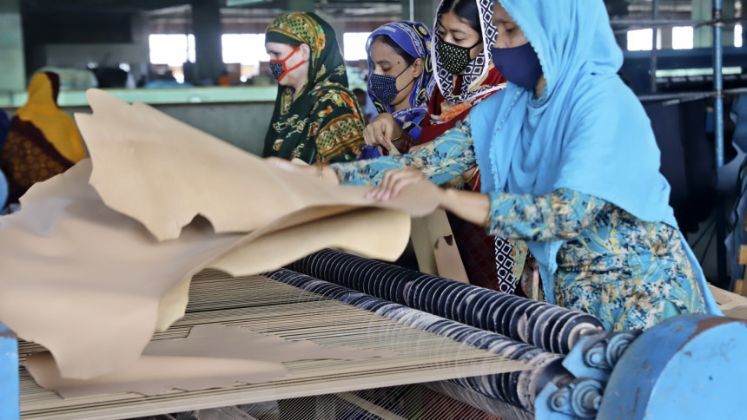
The Bangladesh government is contemplating a modest reduction in customs duties on seven major imported tanning chemicals in the upcoming national budget, aiming to provide some relief to the struggling leather sector. However, industry leaders have expressed skepticism, arguing that the proposed measures are insufficient to restore competitiveness and ensure the sector’s sustainability.
Currently, only 27 tanneries benefit from bonded warehouse facilities that allow duty-free import of chemicals. Meanwhile, approximately 100 other tanneries face higher and inconsistent import duties on essential chemicals, creating what the Bangladesh Tanners Association (BTA) describes as a deeply “uneven playing field.”
Sources within the finance ministry revealed that the proposed tariff revision includes reducing duties on six chemicals from 5 per cent to 1 per cent, and lowering the duty on chromium sulphate from 10 per cent to 5 per cent. However, the introduction of a 15 per cent value-added tax (VAT) on chromium sulphate could negate some of these benefits.
Industry representatives remain unconvinced. Shaheen Ahmed, Chairman of the BTA, stated, “The current import tax structure, ranging from 35 to nearly 40 per cent on essential chemicals, is simply unsustainable. These minor reductions won’t address the deeper issues.” He emphasized that small and medium-sized tanneries are disproportionately burdened and unable to absorb such costs, unlike larger importers.
The BTA has formally urged the National Board of Revenue (NBR) to bring down the total tax incidence on tanning chemicals to just 7.5 per cent. At present, after accounting for advance income tax and other levies, the total duties on certain products can reach as high as 58.6 per cent.
Mizanur Rahman, General Secretary of the BTA and a director at Samata Leather Complex Ltd., voiced concerns over policy reversals. “We’ve seen duty reductions rolled back before, like with chromium sulphate, which erodes trust in policy continuity,” he remarked. Rahman also highlighted that meaningful tax reforms could enable tanners to invest more in raw hides, thereby fostering competition and strengthening local supply chains. “Without real changes, many small and mid-sized tanneries could be forced to shut down, devastating the industry.”
Industry stakeholders also called for infrastructural improvements and certifications to boost export potential. Syed Nasim Manzur, President of the Leather Goods and Footwear Manufacturers & Exporters
Association of Bangladesh (LFMEAB), pointed out that although Bangladesh produces around 350 million square feet of leather annually—40 per cent during Eid-ul-Azha—only 20 to 25 per cent is processed locally. The rest is exported, often through middlemen from China who offer lower prices.
Manzur emphasized the need for infrastructure upgrades, such as a functional Central Effluent Treatment Plant (CETP) in Savar, and internationally recognized certifications like Leather Working Group (LWG) approval, to access higher-value global markets.
As the industry awaits further policy clarifications, tanners urge the government to implement more comprehensive reforms to sustain and grow Bangladesh’s leather sector amid mounting global competition.






